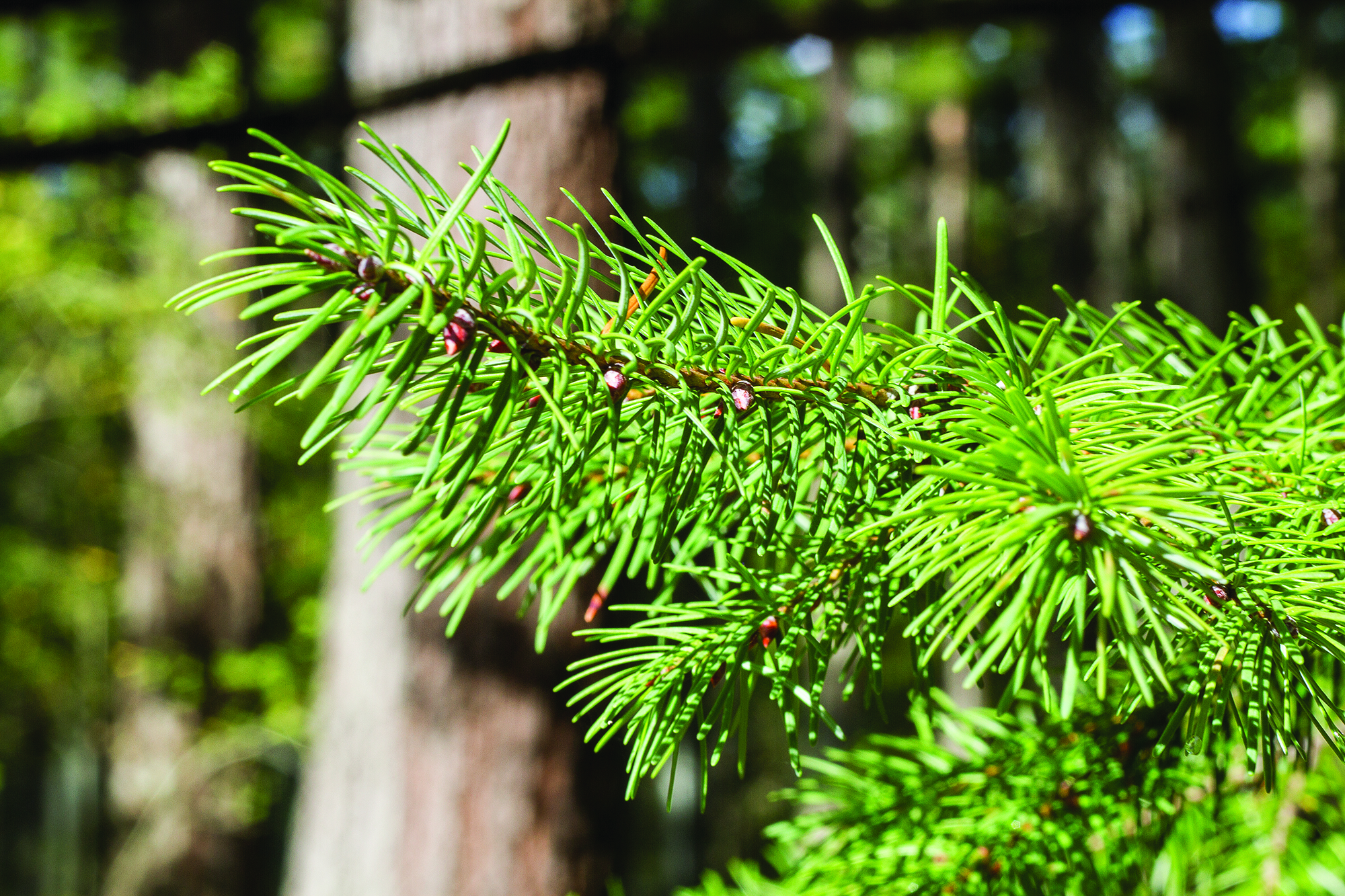The forest is home to so many Douglas firs, western hemlocks, spruce, western white pine and other species that the U.S. Forest Service sells some of its timber stock (although the logging community doesn’t think it sells nearly enough).
But you don’t have to be a timber baron with a team of loggers to take home your own piece of the forest.
The Forest Service allows the public limited access during the winter months to select, cut and take home a Christmas tree.

(Kyle Mittan)
Bad: The Western hemlock, though almost identical at first glance to the Douglas fir, can be spotted with a closer look at its needles. The hemlock’s tops also typically slump to one side. With branches that tend to droop, the species isn’t the best for use as a Christmas tree.
So, what are the legalities behind taking a tree from federal land? There really aren’t many, said Peggy Dressler, a support services specialist based in the Hood Canal Ranger District in Quilcene. A permit costs $5 and can be requested with an application either through the mail or at any district office. There are Forest Service offices at Quinault, Forks, Olympia and Quilcene.
Permit buyers will get an orange tag to fasten to the tree once it’s cut.
About 1,100 permits, Dressler said, are sold each year.
“It’s something that some families have made part of their holiday tradition,” she said. “They come in on a weekend and go up and maybe make a little fire — especially if there’s snow, then it’s really fun for the kids.”
Permits become available in mid-November.
With a permit in hand, finding the right tree is the hard part. On a quick jaunt through the forest near Dressler’s Quilcene office, there’s no shortage of trees. But trees small enough to go inside the average home might be harder to find.
“That’s the thing, since we basically quit clear-cutting in the mid-’80s,” Dressler said. “Up until that point there had always been a succession of small trees.”
There still are, Dressler said, if you know where to find them.

(Kyle Mittan)
Bad: The cedar tree’s branches, much like the hemlock’s, are weak and tend to sag — making the species a poor choice for a Christmas tree.
The forest’s most abundant tree is the Douglas fir, Dressler said, adding that anyone who goes into the forest and chooses a conifer at random is likely to choose one of these. The tree, she said, would work just fine on display between the sofa and the TV stand — if you can find the right one.
“I, personally, think that it’s tough to find a decent Doug fir,” she said, adding that the regrowth in the logging industry will yield a larger selection about five years down the road.
Dressler also points to the silver fir, which can be found at higher elevations and typically hangs on to its needles better than other fir species.
There are few restrictions when it comes to taking a tree, but permits are only good for evergreen species — trees whose leaves don’t shed or change color — and western white pines are off limits.
Regulations also prohibit topping trees — trees must be cut from the bottom.
Cutting a tree doesn’t require any special tools. A hacksaw, bow saw or small chainsaw will work just fine, Dressler said.
Warm clothing perhaps goes without saying, and Dressler also stressed that many back roads throughout the forest are not plowed during the winter months, and certainly not paved, which could pose challenges for packing trees out in smaller vehicles. The Forest Service, in its handout, recommends packing tire chains, flashlights, a shovel and a blanket.
Once a tree is cut and secured in the bed of a truck or on top of a car, the permit-holder will then punch out the month and day on their orange tree tag indicating what day it was cut.
With the tree back home, the Forest Service recommends storing it outside until putting it on display. When you get ready to put the tree up, another fresh cut about an inch off the bottom will allow the tree to drink. Tree stands with reservoirs can be purchased at many home-improvement stores.
Following the holidays, the only step left is disposal. Many counties offer Christmas tree recycling services for a fee, though some require the tree be cut into smaller sections before disposal. In Grays Harbor County, local Boy Scouts offer tree pick-up services or drop-off locations.
Get your permit!
Tree permits in Olympic National Forest:
www.fs.usda.gov/main/olympic/passes-permits/forestproducts

(Kyle Mittan)
Good: The Douglas fir, the forest’s most common tree, makes for a good Christmas tree thanks to its stiff branches. The red buds at the end of the branches are a distinguishing characteristic.